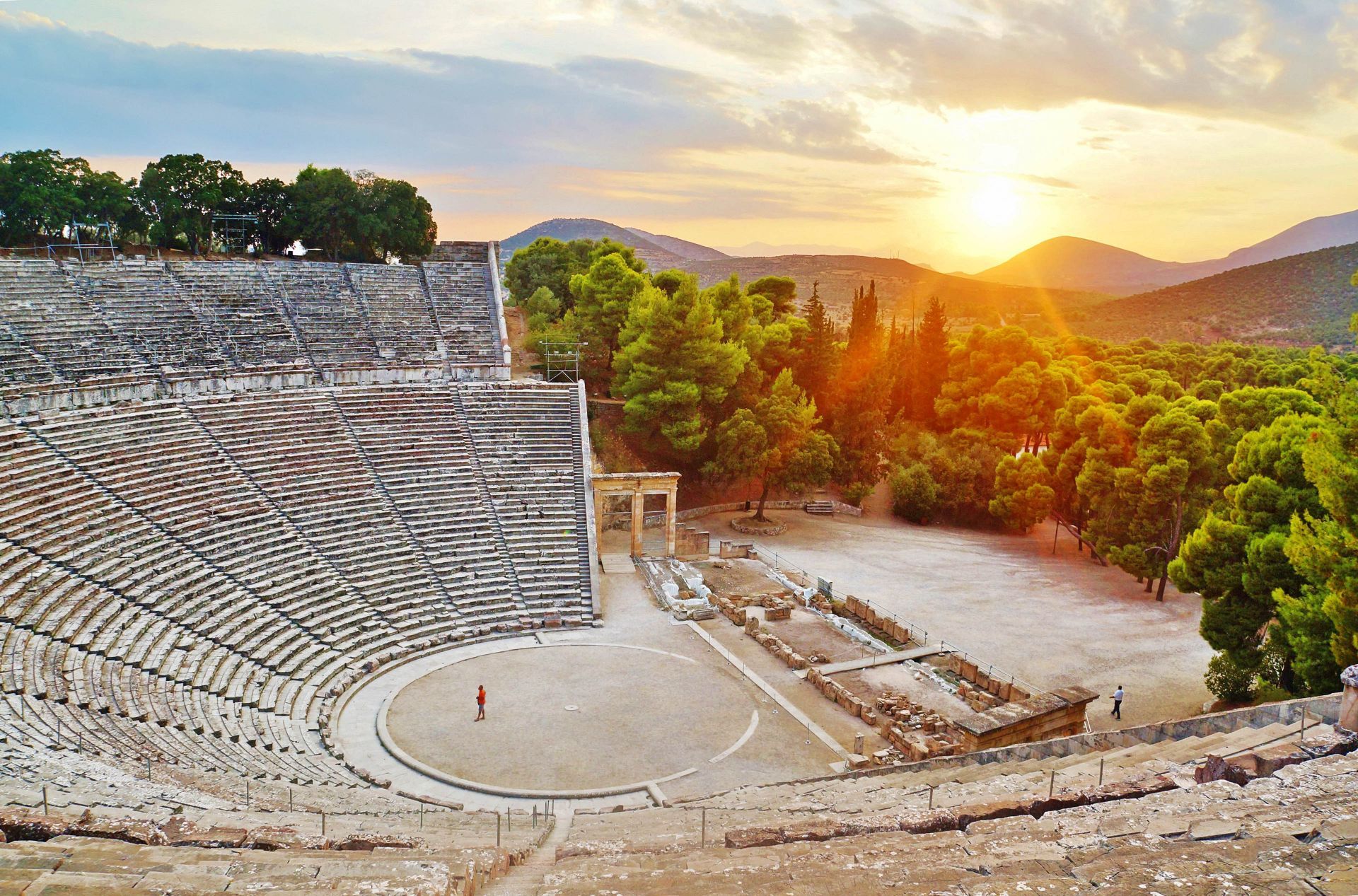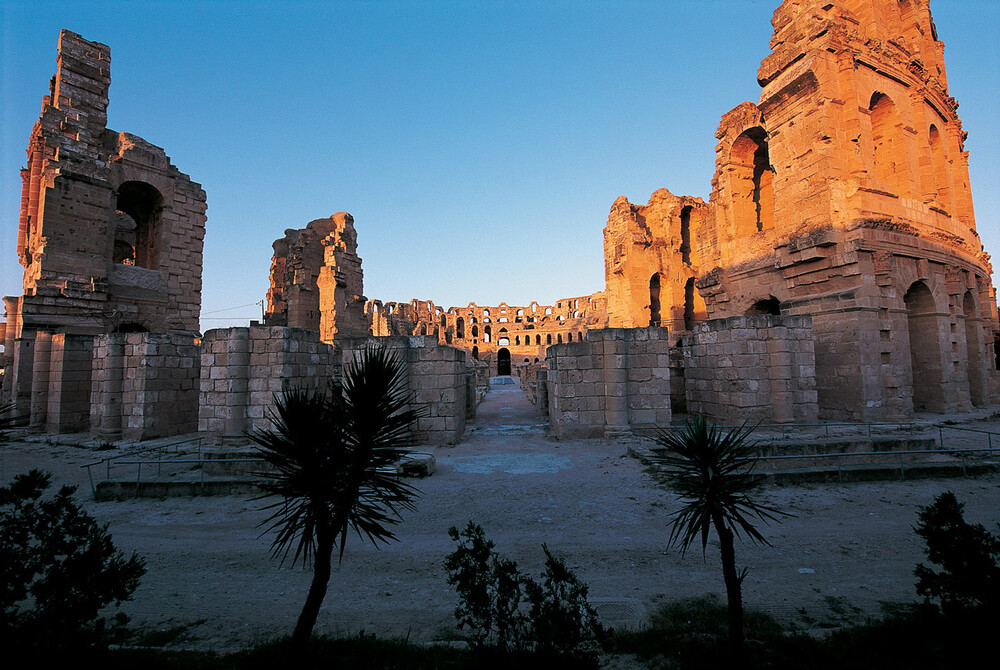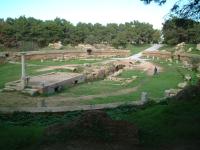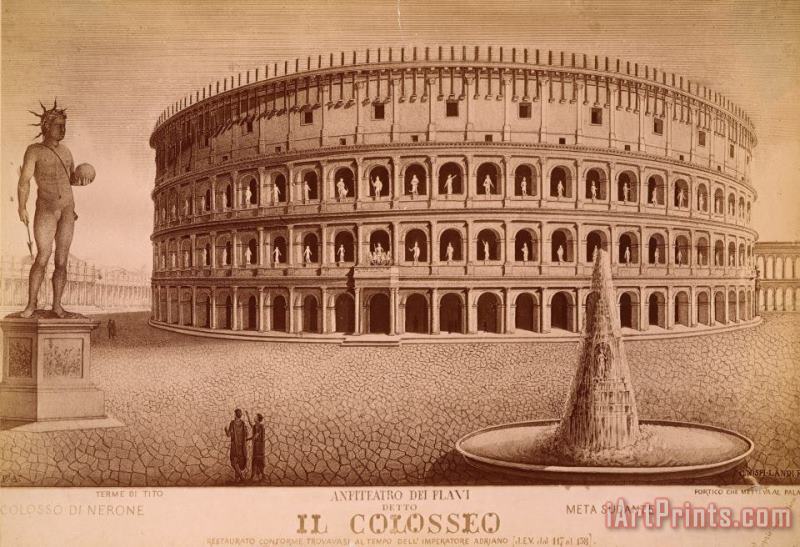Colosseum: Spectacle and Pride of the Roman Empire
Historical Overview
The iconic Colosseum is synonymous with the might of the Roman Empire, and its architecture and political context are paramount.
65 AD
Nero used vast empire resources to build the Domus Aurea, a massive palatial complex that was topped off with a 'colossal' statue of himself. He constructed this residence after a supposed natural fire in 64 AD that devastated the city, an action that created residue tensions between the people and the emperor.
68 AD
After Nero passed, Four Emperors vied for the throne in a year. Vespasian of the Flavian family prevailed and took the throne.
70-72 AD
Vespasian ordered the construction of a 'Gift to the Roman People', the Flavian Amphitheater. It was decreed to be constructed on top of the personal pool that Nero had built, a decision made out of as much symbolism of the new regime as pragmatism. Moreover, the statue of Nero's head was redecorated -- and transformed into the likeness of the sun god Apollo.
79 AD
Emperor Vespasian passed, leaving his eldest son and successor Titus to carry on the construction of the Roman Colosseum.
81 AD
Titus completed the Colosseum and opened it to the public. The inaugural 100-day games served as the opening act of the Colosseum, seeing many gladiators fighting and within it, a sample of animals brought in from all corners of the globe.
83 AD
Domitian, Titus' brother, ascended to the throne, and built an underground system of tunnels and alleyways (used for advanced and sophisticated theatre), as well as the top level of the Colosseum which dramatically expanded seating.
96 AD to 523 AD
The Colosseum was continually used for hosting games, plays, naval battles, and later public announcements, killing of war criminals and Christians (including St. Ignatius and St. Telemachus, and wild hunts.
The Colosseum was built as a Gift to the People; it was designed first and foremost to symbolize the dedication of the empire to its people. Commoners (ordinary citizens), senators, and the emperor watched the games together. Attendance was free, allowing ordinary citizens to attend long-lasting games.
Entertainment
What Being a Spectator at the Rome Colosseum Was Like
While the most iconic and one of the largest, the Colosseum is only one out of the many entertainment venues ( > 2300!) in the Roman empire built. Because of the sheer vastness of the empire, encompassing parts of Gaul (Spain), Hispania, Italy, and France, similar venues were constructed in numerous cities around Europe.
Other amphitheaters, chariot-racing stadiums (circuses), hippodromes, and the like were strewn throughout the sprawling Roman Empire. The architecture of each building is unique due to being in different eras, but it also is constant in that it consistently boasts impressive acoustics, engineering, and stone architecture.
The various types of entertainment venues are separated into four types: the theatre, the stadium, the amphitheater, and the circus -- distinguished by the architecture and general shape of the construction. Theatres were designed for acoustics and were built semicircular. Stadiums were elliptical, and circuses were thin and long. Amphitheaters were also built elliptical to enhance the spectator experience.

Circus Maximus (Roma Italy)
The Circus Maximus is a stadium that was used for chariot-racing and a general purpose entertainment venue. It played an important role in the Ludi games or games for religious festivals.

Epidaurus
The magnificent venue is dedicated to ancient Greek drama, and was capable of hosting tragedies and other shows performed by Greek and international theatre troupes. Through the use of semicircular shapes, as well as the utilization of limestone, which filters out low-frequency sounds and amplifies the high-frequency sounds like those coming from the stage.

Theatre in Amman, Jordan
Theatres were typically semicircular in shape, as opposed to the elliptically-designed amphitheaters that came subsequently. The Roman architecture of entertainment venues share similarities; for instance, the structure was designed to emphasize the cavea of the theatre and to employ a semicircular layout to maintain the acoustic ability. Nowadays, the theater is a host to plays, prize ceremonies, and outdoor musical concerts.

Minute Maid Park (Modern-Day, Houston)
Located in Houston, the Minute Maid Park is home to the Houston Astros and is a prime example of a modern-day sports arena.

Trier Amphitheatre
Trier Amphitheatre is one of the largest amphitheaters. Carved into the city's wall, it could accommodate well over 20,000 spectators. When Emperor Clorianthus moved in later, he brought a series of renovations to the amphitheater -- which enabled it to accommodate a wider variety of performances.

Arenes de Luteces, France.
It was used as an amphitheatre sometime during the 1st century AD and hosted gladiatorial combats.

Amphitheatre of Catania
The amphitheater of Catania was one of the largest amphitheaters in Siciliy. It boasts an elliptical arena, and contains an underground system and vaults supporting the cavea.

Pula Arena
This amphitheatwas part of the local circuit for gladiators. Like the Colosseum, the arena was commissioned by boasts an impressive underground system that allows for the release of animals, ludi scenes, and fighters and boasts a similar arch-heavy architecture.

Amphitheater of El Jem
Like the Colosseum, the Amphitheater of El Jem is an impressive architectural building -- and is one of the few large amphitheaters that can rival its size and sophistication of design.

Verona Arena
It is one of the three largest amphitheaters built in Rome and likely served as an early template. To this day, it still hosts live opera performances and so has seen uses including gladiatorial combat to live performances.

Amphitheatre of Pompeii
The Amphitheatre at Pompeii was built shortly after 70 BCE in the town of Pompeii, and is one of the oldest surviving amphitheaters in modern history. It was one of the first amphitheaters to be built of stone instead of wood. After the eruption of 76 BCE, it was abandoned until its discovery in 1758.

Tarragona Amphitheatre
This amphitheater in the city of Tarragona in Spain also boasted a sophisticated seating arrangement, an underground system of levers and pulleys, and incredible acoustics.

Amphitheater of Carthage
It was originally built in Africa, featuring an impressive stage and was later designated to be a historical preservation site. Under Emperor Caesar, it was built in 133 B.C. E. and w an amphitheater from 133 B.C. E through the 3rd century.

Flavian Amphitheater (Colosseum)
It was the primary entertainment venue in Ancient Rome.
Engineering
The amphitheater was expected to serve its purpose to entertain the Roman masses. As such, it boasted state of the art engineering in several aspects, including arches and water.
The Colosseum boasted a seating capacity of 60,000 people and incredible flexibility in its ability to support different events.
Vaulted arches were an important part of the building. 76 Arches per each of the four levels of the structure made the immense freestanding Colosseum possible.
They allowed for the stability and addition of upper floors.
Roman aqueducts allowed the Colosseum to access water to flood itself (for the sea battles) and also to provide a source of water for the fountains interspersed.
The larger aqueducts could be diverted to the amphitheater and other larger structures.
Because many of the games occurred beneath the summer Italian sun, fountains enabled a much more amenable spectator experience.
The Hypogeum, underground systems of pulleys and levers and platforms, allowed for sophisticated preparation and execution of games.
At times, entire sets would rise up from the Colosseum. Through complicated engineering and design, entire teams of slaves would design the stadium in much the same way how it happens in a Super Bowl Half-Time show, for example.
The gladiators would also rise through the floor, along with their opponents and animals (through trapdoors).
The underground system also served as a stadium-sized zoo of sorts. Crowds craved for wilder and wilder entertainment. When gladiators weren't enough, the Colosseum brought forth staged public executions and, dramas. Even wild animals were a spectacle such as lions, bulls, and tigers. These animals, when released, would spring through the trap doors in a dramatic manner.
The levels of the Colosseum were supported through the use of arches. Each successive edge was stacked on top of each other and relied on the stability afforded by arches on lower levels.
The result, different tiers of seating, allowed for the separation of the audience.
The emperor's box was located closest to the arena and had the best view. More distinguished Roman citizens sat to the left and right.
A massive awning shielded spectators from the Italian sun. Historians are not entirely sure how it was accomplished, but it was most likely through the same technology as that used in the navy.
Because of the need for skilled operators of the shield, the navy brigade always occupied the topmost seats to assist with the operations.
Media Representation
Fascination with Gladiators transcends time. From paintings to movies, the plight of gladiators (and their journey to the Colosseum) are portrayed with dramatic flourish.
There are various continuations of the theme of engineering and media representation throughout history.
Bibliography